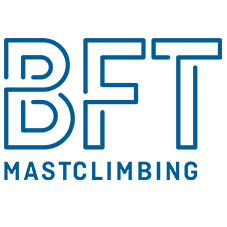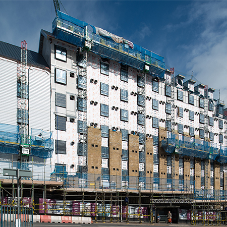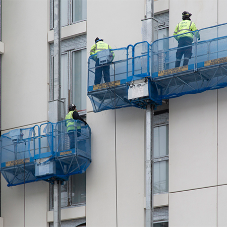Imagine the feeling. After witnessing the apocalyptic scenes of Grenfell Tower consumed by flames, you find out that you are in a set of similar circumstances; your home, everything you’ve worked for, could be as easily destroyed in a matter of moments.
Your home is essentially surrounded by nothing more than a fire accelerant.
The issue is this isn’t a one-off circumstance. After thorough investigations, a chain reaction started. Something that will be resonating throughout the industry for decades to come.
Thousands of buildings up and down the country have been recognised as using the same or similar cladding that caused the disaster at Grenfell Tower, and now, one of the most significant reparative projects throughout construction history is underway.
It might sound simple: surround the building, gain access to the cladding, remove it all, replace it and move on to the next one. Realistically, this reparative work is much more complicated. Overseen by the Department of Levelling-Up, Housing & Committees (LUHC), there are still disagreements about who pays, how the work is done, and where to start.
However, the impact on residents within those now ‘unsafe buildings’ is the more important issue. This work needs to be completed for their own safety, but it has to be completed in a way that takes into consideration their health, safety, and wellbeing.
From a recent conversation BFT Mastclimbing had with a resident within one of these buildings, this isn’t the case.
Natalie Carter is a resident in one of Tower Hamlets’ many high-rise residential properties and is currently lobbying the Government to bring in a mandate to all developers that prioritises the residents within buildings, limiting any disruption caused to everyday life.
Darkness, Delays & Despair
Natalie sits in the kitchen of her flat. Everything looks as one would expect in the world of video calls except for one thing. The call is taking place during a summer afternoon, yet there is very little light coming through Natalie’s window, it’s as though she’s in a completely different time zone.
That’s not the case though. Like the other 559 occupants in her London apartment building, she is entirely enclosed by scaffolding as part of a multi-million-pound reparative project to remove and replace the unsafe cladding.
“Scaffolding started going up last summer, so it’s been a year so far,” she says.
“Initially, they were going to phase the building into 3 parts, but the BSF (Building a Safer Future) insisted the cladding had to come off in one go and that meant the scaffolding and monarflex had to go up.
“For me, it means that six months went by with no work whatsoever whilst having all that scaffolding and white opaque plastic sheeting, which completely blocks any daylight whatsoever.”
For Natalie, her fellow residents and tens of thousands of people up and down the country who are or will find themselves in similar situations over the next few years, it’s not just a minor inconvenience.
This is work that, due to the size, scale and equipment used, requires calendars to measure, not stopwatches. Twinned with wider industry issues of scaffolding and scaffolder shortages, projects are glacially slow and are only getting slower.
The work on Natalie’s building was set to conclude in May 2022 but has since been delayed an estimated 26 weeks.
“It’s a nationwide problem [worker shortages in construction]. We’re at the front of the queue and there are already delays.
“If it was a handful of buildings, it’s a different story, but we’re talking thousands across the country. This isn’t going away anytime soon. Our scaffolding went up last summer and it’s already been a year, they’ll be building until end of November and then they have to take it all down. We’re still a year or two away from it being done and being able to sell and move on. There are thousands of buildings. This is decades of work.”
Life Within The Scaffolding
Having scaffolding on any building is an eye sore. Never mind the disruption to the communal areas, the on-street parking or even the bin storage within these residential flats. But over extended periods it affects those within, too.
Imagine having your windows blocked up and daylight and airflow restricted; suddenly you feel like a prisoner in your own home.
“There is no way human beings should have to live like this. Absolutely no way.
“You wouldn’t accept people leaving dogs in a building wrapped in white plastic in the height of summer. You just wouldn’t. But we’re here. It can’t happen.
“For me it’s been tough, but there’s a lot of young families here, too. You know, young ones with ‘covid babies’ and all they’ve ever known is this white plastic sheeting obstructing their view. It’s been so disruptive. People are becoming depressed, complaining of symptoms of SAD - which is normally associated with the winter months - it’s just not right.”
Beyond the mental health effects, these behemoth structures impact residents’ privacy, too.
“There are people walking past your windows every day,” Natalie says.
“All day every day past the bedroom windows and the lounge windows. We’re spending more time with these people than with our family!
“You know, single women are incredibly uncomfortable with workers outside the windows, people with kids can’t let them run around like children do, they want to make sure they’re fully dressed before they go near windows.
“How can you tell a toddler that used to be able to do what they wanted that suddenly they can’t go on the balcony, they need to put clothes on. It’s been so disruptive.
“There’s also the security risk that scaffolding brings. One lady in this building mentioned she caught someone peering into her window at 2am. It was someone who had scaled up the scaffolding.
"Whether there was any intent, the truth is, when you’re on the 16th floor, the last thing you expect to see is someone outside your window.”
The issue is that there is no real expectation as to what the work will entail. Of course, everybody understands construction work and the purpose of scaffolding, but the size, scale and restrictions that these particular projects with these particular approaches bring are completely unthinkable.
“It’s infinitely worse than I imagined.
“First, it’s the disruption, the streetlights, everything being flattened. Then it’s the noise, God knows what they’re doing, it’s deafening. And then down comes the monarflex and we had no reference point. I can’t describe it; your home is literally wrapped in plastic.
“You can’t see out, there’s no airflow, no daylight and you don’t realise what an insidious thing it is over time. Gradually it wears you down and you find yourself really depressed or snapping at people.
“Had we known there were alternatives [to the entire enclosed scaffolding], we’d have definitely been asking for them.
“There are families who have moved out because they can’t put up with living behind plastic for any longer.”
So, what are the alternatives and what can residents do to prevent this from continuing to occur to unexpected homeowners up and down the country?
The Power of Residents & The Intended Outcome
“We have no say whatsoever." Natalie responds when asked whether resident associations are asked for input on the reparative work set to take place on their home.
“All the conversations happen between the developers and the government. Essentially, we just see the outcome of that, there’s no involvement in terms of approach.”
It begs a serious question. Are the key stakeholders in this reparative work in it for themselves, seeing it as merely a box-ticking exercise, a ‘to-do-list’, or are they seriously considering the impact this has on those residents?
They’ve suffered enough to the extent that their homes are deemed unsafe and now in the process of repairing these issues, homes are being enclosed impacting what are basic human rights.
“There’s got to be a solution that has less impact and whether that is mast climbers or something else, we want to have credible options on the table.
“When we approach LUHC and the Government, we’re asking for a code of practice and that they are considering alternatives. The more tools in the toolbox, the better.”
This isn’t a resident of an apartment building complaining about noisy scaffolders. It’s quite the opposite. Natalie is an incredibly empowered individual who is banding together with fellow residents to prevent similar situations from occurring across up and down the nation.
When asked what her long-term vision is, it’s not a rash decision to ban scaffolding, to halt all reparative work, it’s more closely aligned with humanitarian work.
“If there’s a way of doing this work that’s faster and more respectful of residents then we should absolutely be doing that.
“I want to see the Government bring in a mandate to all developers who are charged with remediating the work of these buildings. It’s not good enough to just do the work. They must prioritise and be respectful of the health, safety, and wellbeing of the residents within.”
If that means that at the start of these projects, more consideration is given to other forms of access, materials, or general codes of practice, then it’s going to be a better and far quicker process than the decade prediction made by Natalie.
What Can You Do?
If you’re in a similar situation to Natalie, or believe your building is likely to undergo similar work, here’s some advice from an already successful campaigner.
• Where possible form a resident’s association
• Get officially recognised for a much stronger voice
• Reach out to the NLC (National Leaseholders committee), & Leasehold Knowledge Partnership.
• Lobby! Speak to your MP, the LUHC and get your voice heard.
“There’s no way human beings should have to live like this” – The Reality of Life Behind Scaffolding
Image Gallery
“There’s no way human beings should have to live like this” – The Reality of Life Behind Scaffolding
“There’s no way human beings should have to live like this” – The Reality of Life Behind Scaffolding
“There’s no way human beings should have to live like this” – The Reality of Life Behind Scaffolding
| T | 0808 178 9772 |
|---|---|
| E | rob.munns@bftmastclimbing.com |
| W | Visit BFT Mastclimbing Ltd's website |
| The Rear Yard, Lancer Court, Grovebury Road, Leighton Buzzard, Bedfordshire, LU7 4SE |





